How To Choose The Right Size Of Mattress Buying Guide (2025)
If you’re ready to start shopping for your perfect new mattress but aren’t sure where to begin, you’re in the right place. Keep reading, and I’ll show you how to choose the right size of mattress so you can shop with confidence and select the best size for sweet sleep in your bedroom.
I may earn a small commission for affiliate links in this post at no extra cost to you. Please read my privacy policy and privacy page for more information. As an Amazon Associate, I earn from qualifying purchases.
When it comes to shopping for a new mattress, the very first—and most important—decision you’ll make is choosing the right size.
In all my years of selling mattresses, I’ve seen countless shoppers skip this key step, only to end up with a bed that overwhelms their space or feels too small once it’s delivered.
Before you set foot in a mattress showroom or start scrolling through online mattress reviews, it’s worth taking a few minutes to figure out exactly what size fits your lifestyle, your bedroom, and your sleep needs.
To help you get started shopping, I’ll walk you through practical advice for measuring your bedroom, understanding how much space you really have, and what mattress sizes typically work best for different types of sleepers.
I’ve got tips for you whether you snooze solo, share with a partner, or have kids or pets joining you each night.
By the end, you’ll know exactly which mattress size gives you the right mix of comfort, space, and balance for your best night’s sleep.
Ready to learn how to choose the right size of mattress for your home?
Great! Grab a snack, settle in, and let’s get mattress shopping!
Mattress Size Chart: Measurements and Who Each Size Fits
Choosing a size is part measurements, part lifestyle.
The right choice should fit your height, how many people or pets share the bed, and the room it lives in.
Use the quick chart below to compare the standard sizes and who they suit best.
A few quick comparisons help clarify common tradeoffs:
- Twin vs Twin XL: both are 39 inches wide, Twin XL is 5 inches longer for growing teens or tall sleepers in tight rooms.
- Full vs Queen: Full is 54 inches wide, Queen is 60 inches wide, and 5 inches longer. Queen is better for couples in most cases.
- California King dimensions: 72×84 offers 4 extra inches of length compared to King, but King is 4 inches wider.
Twin vs Twin XL (best for kids, teens, and dorms)
A Twin measures 39×75.
It works well for kids, younger teens, bunk beds, daybeds, and very small rooms.
If you’re outfitting a bunk or a trundle, Twin is the standard.
A Twin XL measures 39×80.
It is the same width as a Twin, but it gives 5 extra inches of length.
That extra leg room helps taller teens and college students.
Dorms often use Twin XL, and it is a smart pick for narrow rooms where width is tight.
If your child is tall or in a growth spurt, I lean toward Twin XL to avoid outgrowing the bed too soon.
Full/Double (great for solo adults or tight rooms)
A Full, sometimes called a Double or Standard, measures 54×75.
It gives more shoulder room than a Twin and fits nicely in a studio or small bedroom.
For a single adult, it can feel just right, especially if you prefer a cozy sleep space.
For couples, a Full is usually too snug, both in width and length.
Taller sleepers may find their feet hanging off the end.
I steer couples to at least a Queen when space allows.
Queen (the best all-around pick for most couples)
A Queen measures 60×80.
It is the most popular size for a reason.
It balances space, cost, and sheet availability, and it fits in most primary bedrooms without crowding the room.
For couples, a Queen offers comfortable elbow room without taking over the floor.
For solo sleepers, it feels spacious and easy to make the bed.
If you’re unsure and your room can handle it, start your search with a Queen.
King and Split King (maximum width for couples and pets)
A King measures 76×80.
It gives the most width of any standard mattress, which is ideal if you have a restless partner, share with kids occasionally, or sleep with a dog curled at your side.
A Split King is two Twin XL mattresses on one adjustable base.
It is great when partners prefer different firmness levels or want to lift their own side. It also moves through tight stairwells or apartments more easily than a single large King.
Check your room size before picking a King.
The bed footprint is wide, and you still need space for nightstands and pathways.
California King (extra length for tall sleepers)
A California King measures 72×84.
It is 4 inches longer than a standard King, and 4 inches narrower.
I recommend it for very tall sleepers, often 6 feet 4 inches or taller, or for anyone who sleeps with a pet at the foot of the bed and needs extra length.
Bedding can cost more, and availability may be limited compared to Queen or King.
If width is your priority, a standard King gives more elbow room.
Measure Your Room: Fit, Clearance, and Layout That Works
Size on paper is only half the story.
A bed that swallows the room will not feel relaxing, and a frame that blocks a closet gets old fast.
Before you shop, grab a tape measure and map the layout.
Aim for several inches of walking space on at least two sides when you can.
This simple step answers will a King fit in my room in minutes.
How to measure the bedroom and space for the mattress
Measure the room from wall to wall.
Note window placement, heaters, baseboards, and outlets.
Mark where the closet doors swing and where any radiators or vents sit.
Use painter’s tape or flattened cardboard to outline the mattress size on the floor so you can see where it will be placed.
Add the frame size if it has a headboard or footboard.
Include nightstands in your outline, and leave space for a pathway at the sides and foot.
If you plan under-bed storage, factor that in now.
Drawers need room to open.
If you use storage bins, make sure the bed height will allow them to slide in and out.
Quick tip: tape the mattress size so the space still fits closet doors, dresser drawers, and nightstands without bumping.
Clearance you need around the bed for comfort
I recommend 24 to 30 inches of walkway on each side and at the foot of the bed whenever possible.
This makes the room feel open and makes daily life easier.
In tight rooms, keep at least one side open with 24 inches of clearance.
Check door swing for the bedroom door and closet doors.
Make sure dresser drawers can open fully.
If you have a crib, bassinet, or pet beds, plan that space too.
A thoughtful layout now prevents daily frustration later.
Frames, headboards, and bed height change the feel
A mattress size is fixed, but the finished bed can grow.
Frames, headboards, and footboards add inches to the overall footprint, and thicker mattresses plus tall foundations raise the look and feel of the bed.
If your room is small, consider a platform bed or a low-profile base.
Many foundations come in multiple heights, so you can pick a slimmer option to keep the bed from towering over the space.
A sleek frame without a bulky footboard can make a Queen feel airy even in a modest room.
Doors, stairs, and delivery path checklist
Measure door widths, hallway turns, and stair landings.
If you live in a building, check elevator size.
Rolled mattresses in a box move more easily in tight spaces.
Split full or queen foundations can solve tricky deliveries.
A quick walkthrough helps you avoid a delivery that stops at the front door.
I always recommend measuring twice for older homes with narrow staircases before delivery day.
Match Mattress Size to Your Body, Sleep Style, and Household
The right size should honor your body, your sleep habits, and your household.
Think about height, how much you move at night, and who joins you.
The best mattress size for couples is often Queen or King, but your room and preference matter just as much.
Solo sleepers and guest rooms
For solo sleepers, Twin, Twin XL, or Full can be enough, depending on height and room size.
If you are shorter or furnishing a small room, a Twin or Full keeps things simple.
If you are tall or like extra leg room, Twin XL or Queen feels better.
For guest rooms, I suggest a Queen if the space allows.
It gives flexibility for couples or single guests who want more space.
If the room is small, a Full still hosts well and opens floor space for a chair or desk.
Couples, restless sleepers, and light sleepers
Couples need enough width to move without waking each other.
If one partner is a restless sleeper or both of you prefer more personal space, a King is preferred.
For couples who like to sleep close or who have a smaller room, a Queen works well.
Light sleepers benefit from extra width.
It puts a small buffer between partners if someone changes position a lot.
Pets, kids, and cozy weekend mornings can tip the scale to a King.
Tall or plus size sleepers need length and support
Height matters.
If you are taller than 6 feet, aim for 80 to 84 inches of length.
Twin XL, Queen, and King all run 80 inches long, and California King adds length at 84 inches.
Wider sizes can help larger bodies feel more supported, especially if you sit on the edge to get in and out.
More surface area means more usable space and more comfort along the perimeter of the mattress.
Kids, teens, and growth spurts
Kids grow fast, and a bed that fits today should still work a few years from now.
A Twin often suits younger kids, but a Twin XL offers extra leg room that can carry them through the teen years.
For teens, a Twin XL or Full gives them room to stretch without taking over the room.
Shared kids’ rooms can use two Twin beds or a bunk, and many newer bunk models accept Twin on the top and Full on the bottom.
If the bedroom is large, a Full or even a Queen for a single teen can add longevity.
Budget, Bedding, and Buying Smart
Size affects cost, bedding availability, and how easy it is to move later.
I always recommend to my customers to think beyond the mattress.
Sheets, protectors, frames, and delivery all add up.
A few smart checks now save money and stress later.
Total cost of ownership and bedding availability
Larger mattresses usually cost more.
Bedding also climbs in price as you go up in size.
Specialty sizes like California King often have pricier or harder-to-find sheets and protectors.
Future flexibility if you move or rearrange
If you move often or live in smaller homes, a Queen is the most flexible size.
It fits in most rooms and makes sheet shopping easy.
It is also simpler to move than a King.
If you have the space and love room to stretch, a King is wonderful.
Just remember the tradeoffs.
More width means more space needed and a tougher fit through tight stairwells.
Be sure to consider split bases and split foundations as they can solve many delivery challenges.
Common mistakes to avoid
- Buying too small for your height, then feeling cramped on length.
- Ignoring doorways, stair turns, elevators, and delivery path measurements.
- Forgetting nightstands, lamps, and clearance for drawers and closet doors.
- Not checking return policies or in home trials before you buy.
- Picking a bulky frame that bloats the footprint in a small room.
- Assuming California King is bigger in all directions, when it is longer but narrower than King.
Final Thoughts
Learning how to choose the right size of mattress is the foundation of a smooth mattress shopping experience as well as your ultimate goal of better sleep.
Once you know the dimensions that fit your space and your sleep style, the rest of your mattress shopping journey becomes simple and stress-free.
Whether you’re upgrading from a queen to a king or downsizing for a guest room, taking a few minutes to measure first can save you time, money, and plenty of frustration later.
Use this mattress size guide as your starting point, and you’ll be well on your way to finding a bed that fits just right.
Need some more help getting better sleep? Grab this night routine checklist and we’ll send it for free to your inbox!
Your Turn
Now that you know how to choose the right size of mattress, are you ready to start shopping? Great! Let me know in the comments if you have any questions and what size of mattress you’re picking.
RELATED POSTS:
- How to Choose the Right Mattress Type for Better Sleep
- How to Choose the Correct Mattress Firmness From a Mattress Pro
- Best Bed Sheets for Hot Sleepers: What to Buy to Stay Cool and Sleep Well
- The Best Sleep Investment I’ve Ever Made (and Why It’s the BedJet Sleep System)
- Cozy Bedroom Ideas for Better Sleep: Easy Tips to Create a Sleep Sanctuary
- Top 15 Bedroom Essentials: My Must Have List for Better Sleep
- How to Sleep Faster and Wake Up Energized Every Morning
Hi, I’m Debbie, general manager of a mattress store chain with 25+ years helping people improve their sleep quality. At Sweet Sleep Tips, I share natural, practical sleep solutions, calming bedtime habits, and printable tools to help you fall asleep faster and wake up refreshed. My goal is to make better sleep simple, healthy, and stress-free.
Follow me on Pinterest, Instagram, and Facebook to stay up to date with all the latest Sweet Sleep Tips.


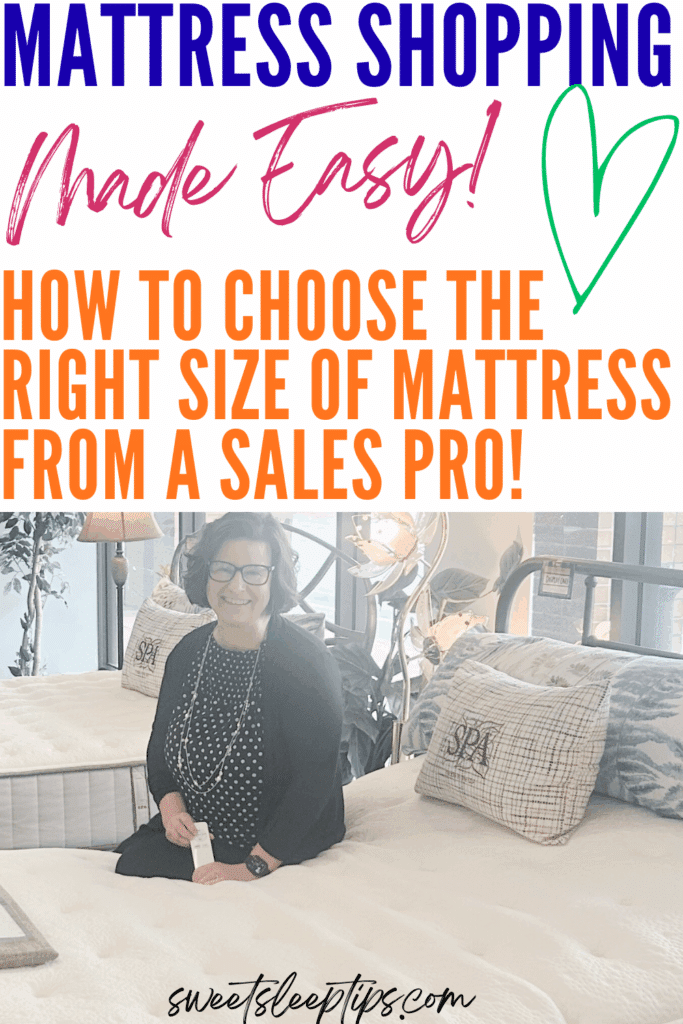

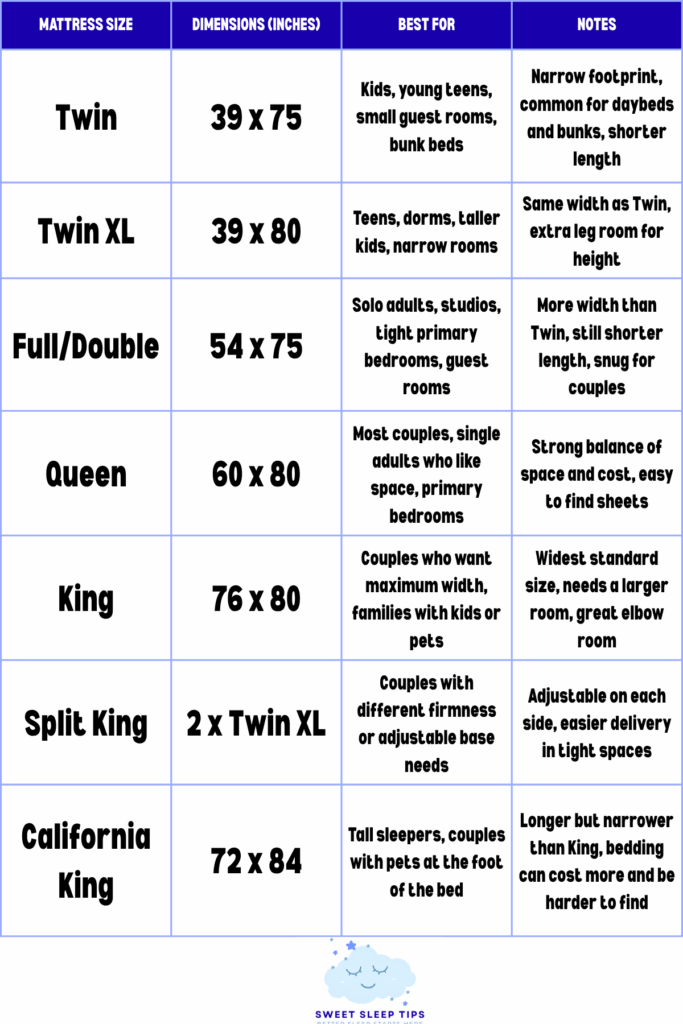
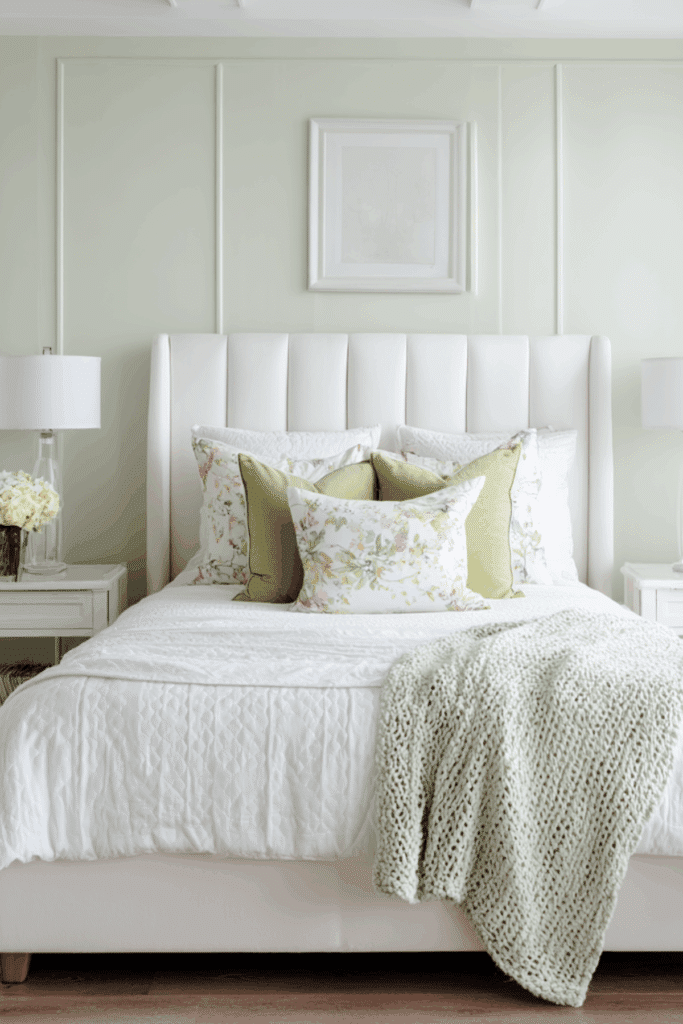




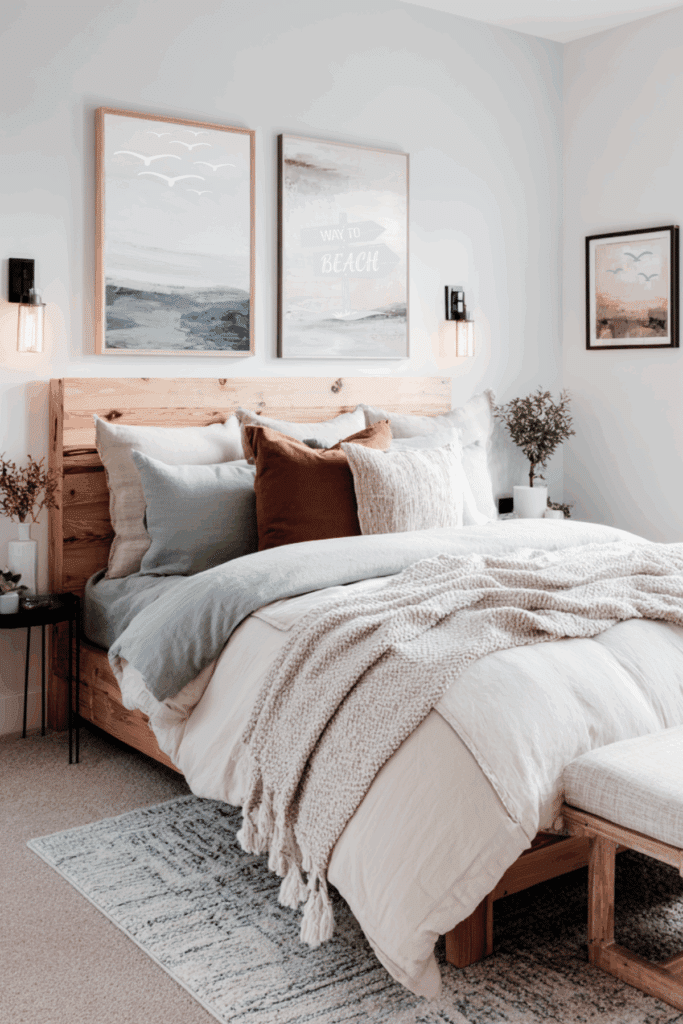

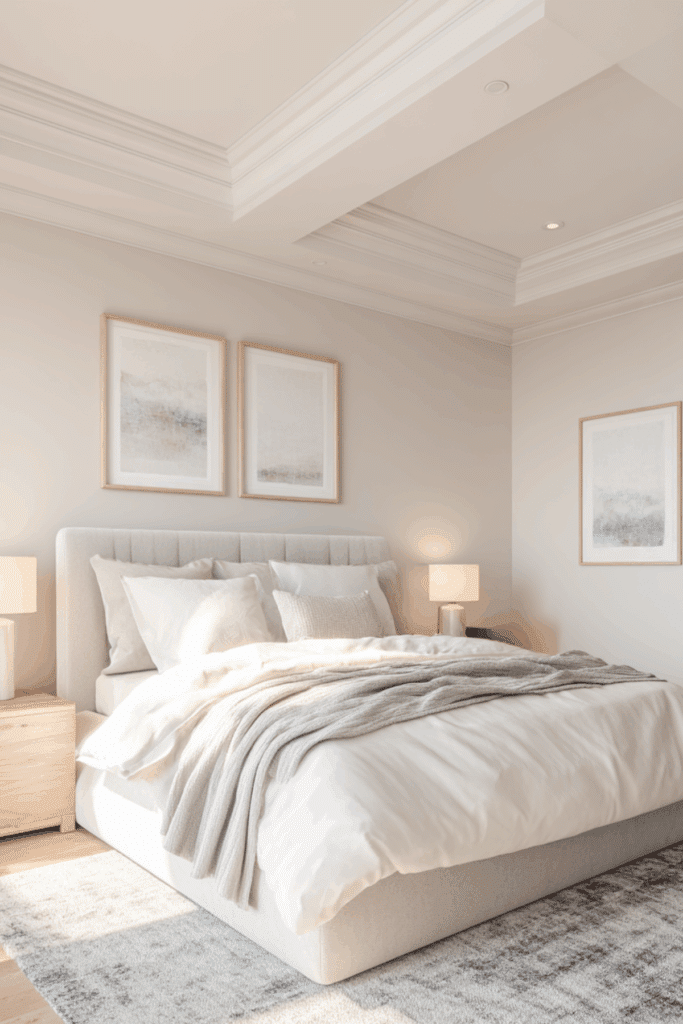
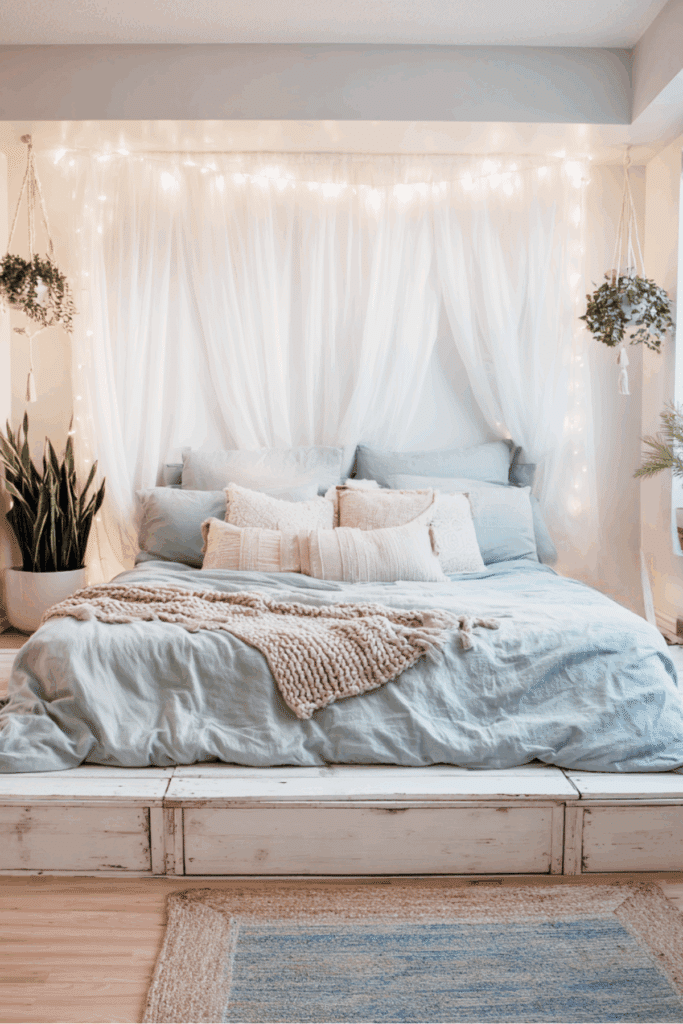

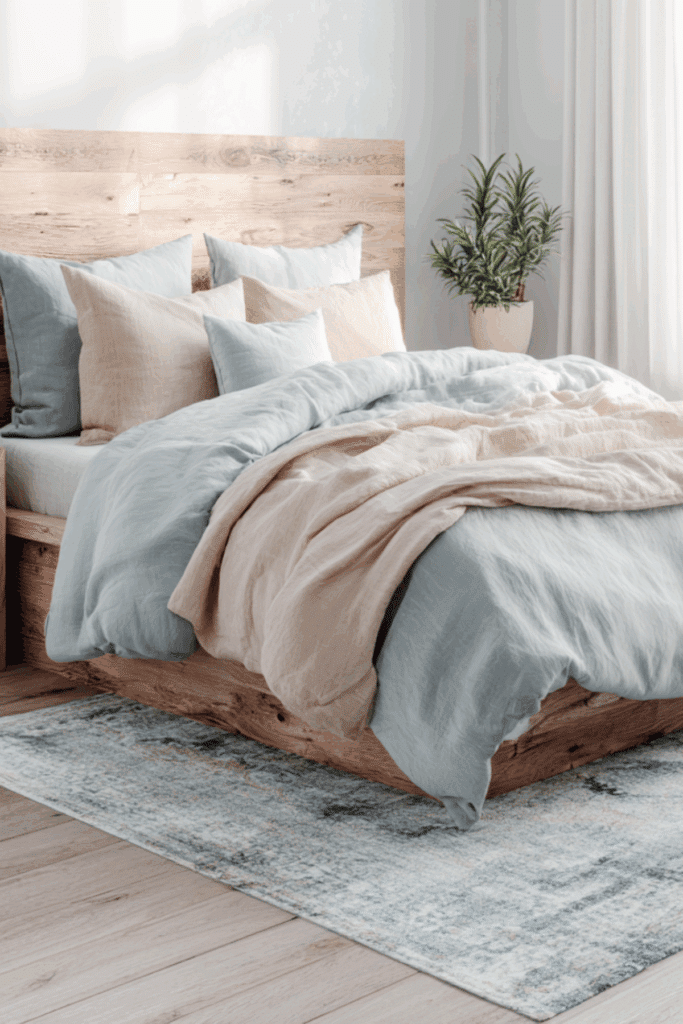


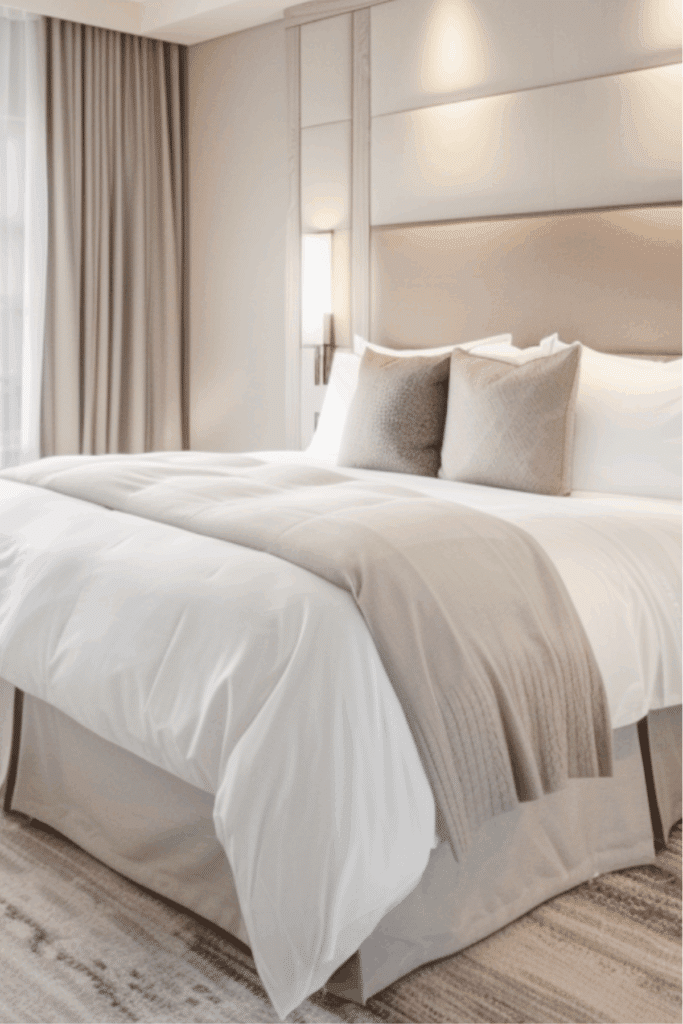

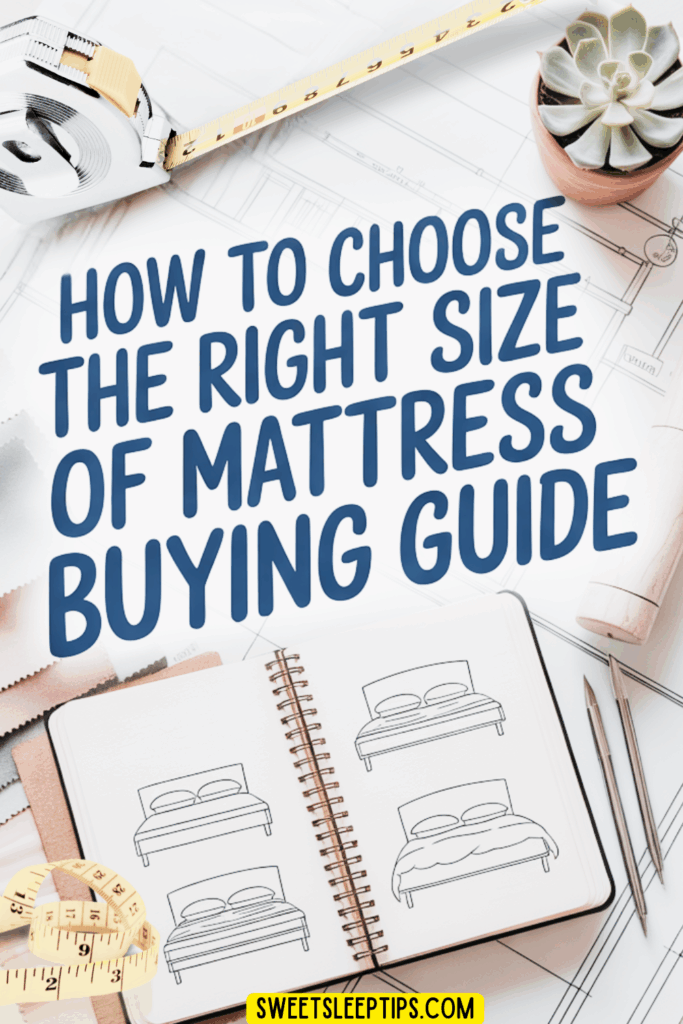





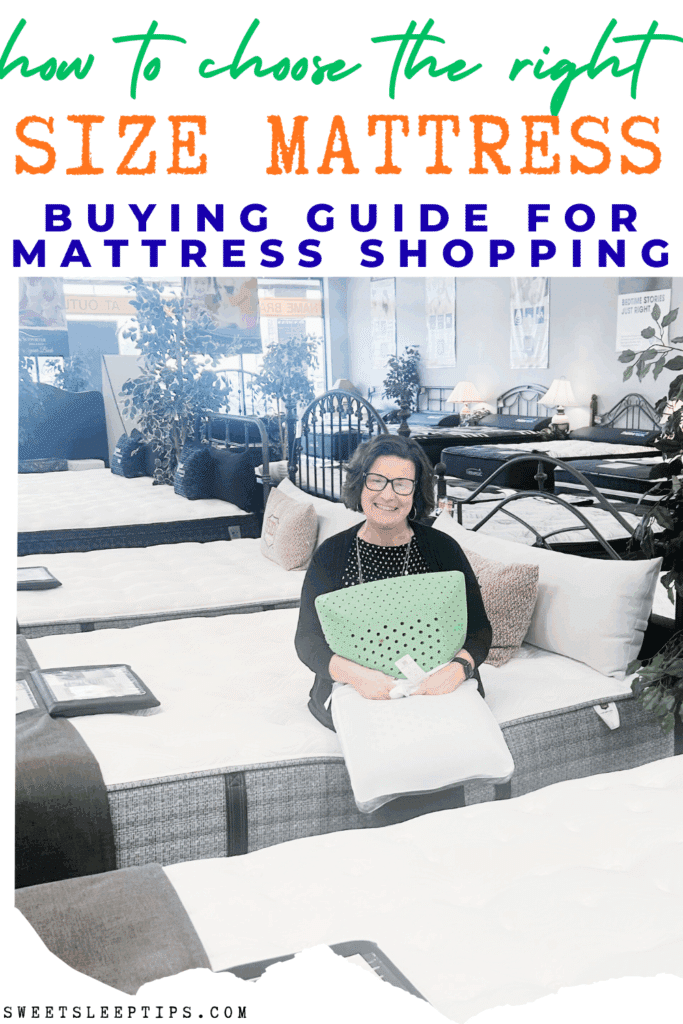
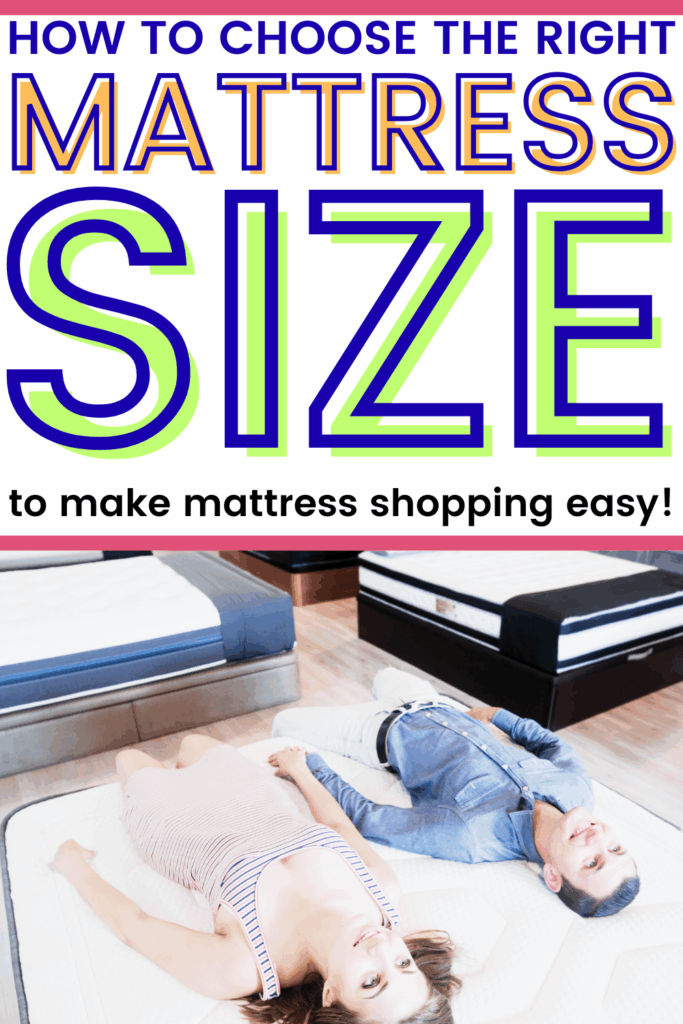
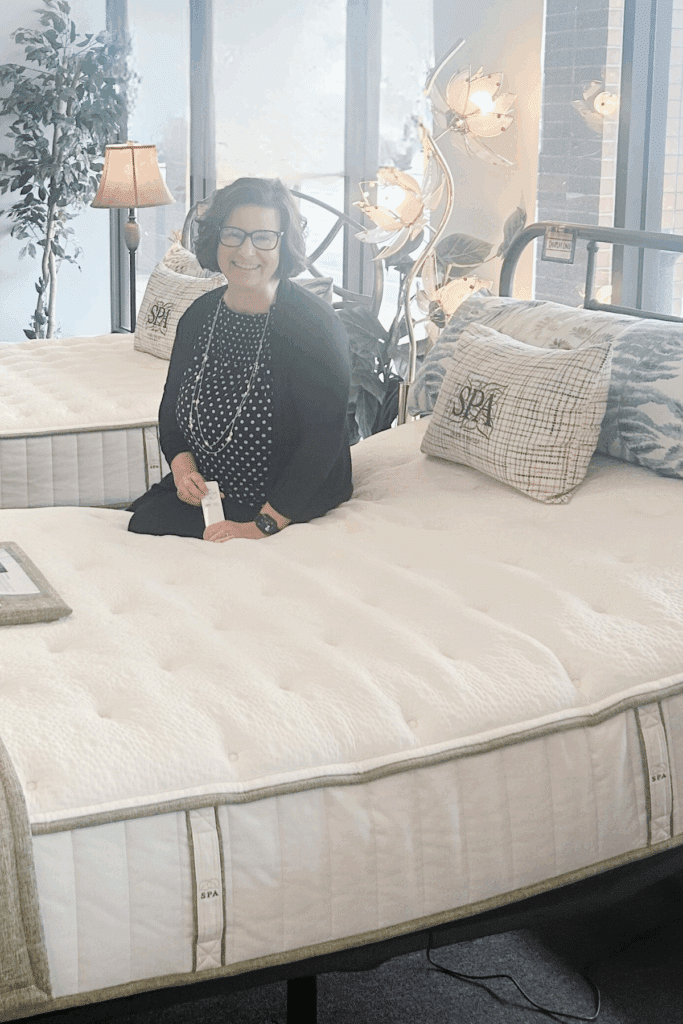





This is a super helpful guide! I never realized how many factors go into choosing the right mattress size until now. It’s definitely more complicated than “what fits in the room.” Thanks for breaking it down so clearly!
Very helpful! So many things to consider I never thought about. Thank you!
It’s smart to determine the size mattress that would fit your space and lifestyle before even thinking about what specific brand to buy. Thank you for these awesome tips!
This guide is so practical and easy to follow. I love how you combine exact measurements with real-life tips like checking doorways, planning for pets/kids and thinking about future moves. It really simplifies a decision that usually feels overwhelming!